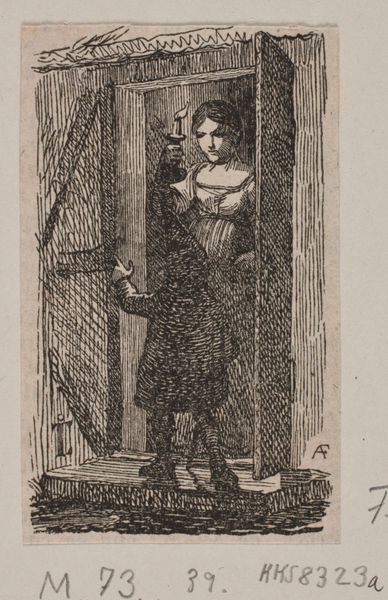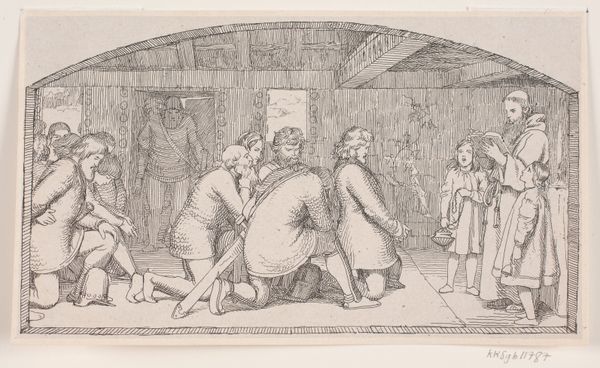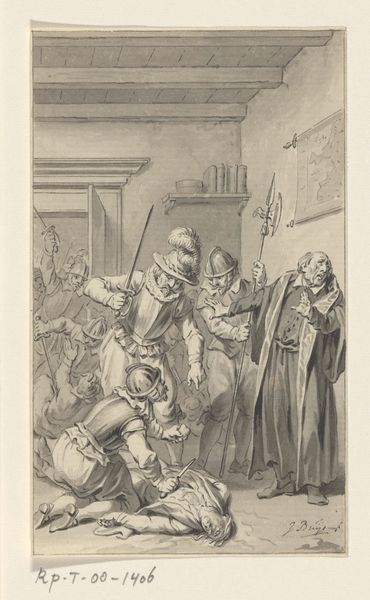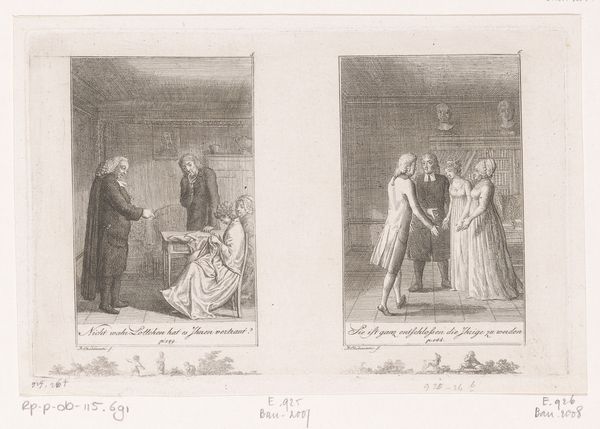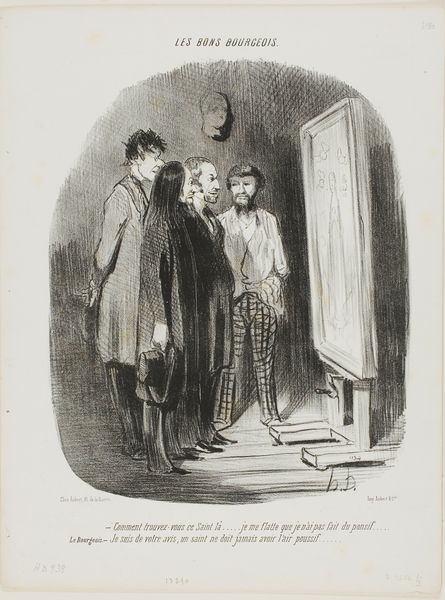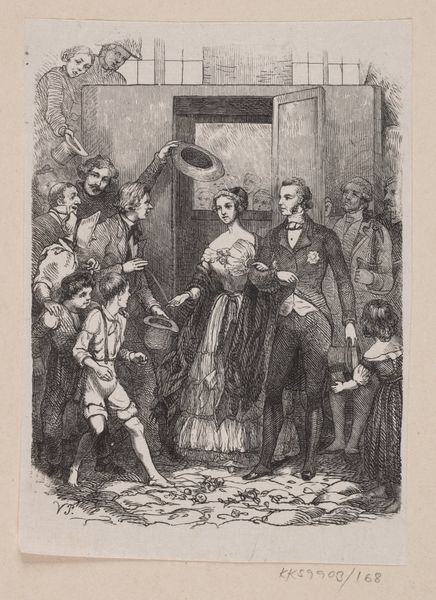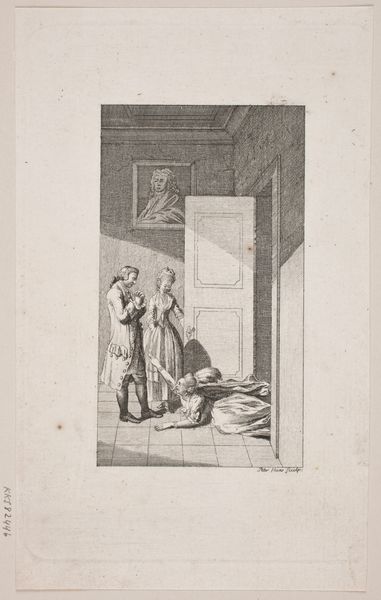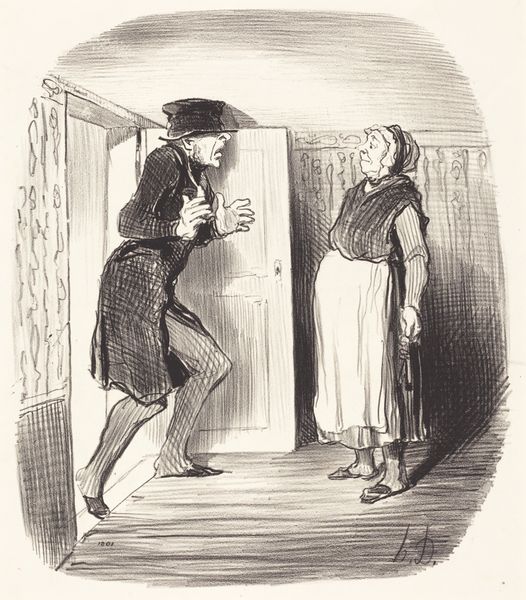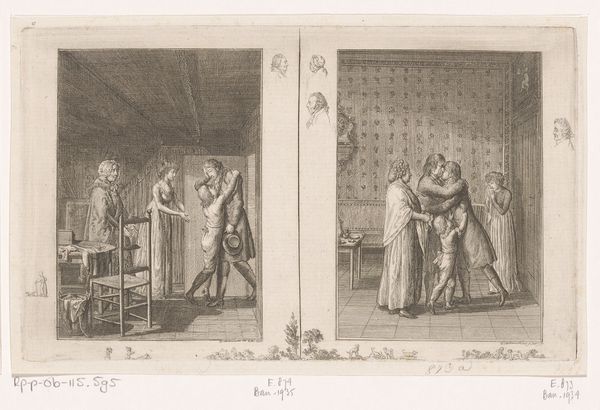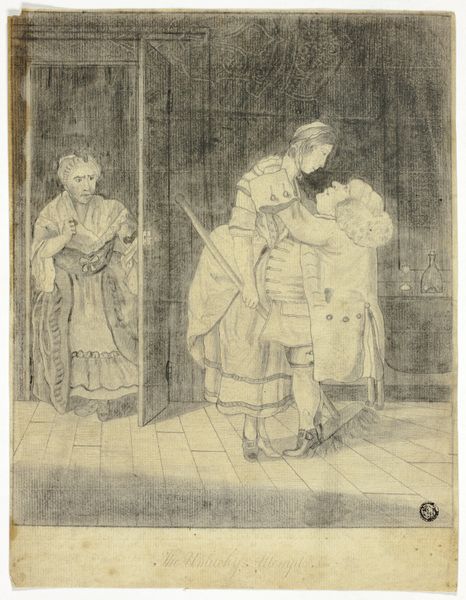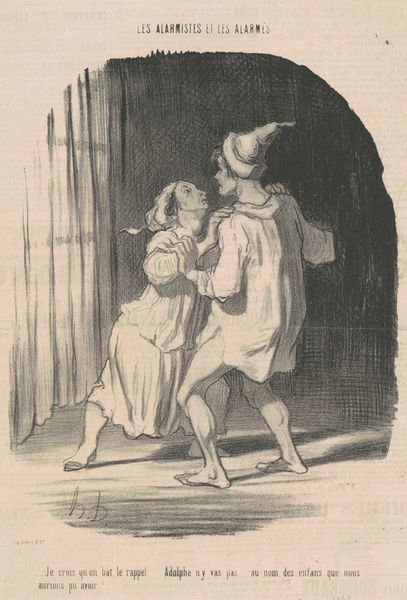
drawing, print, ink, woodcut
#
drawing
#
narrative-art
# print
#
figuration
#
ink
#
woodcut
Dimensions: 116 mm (height) x 128 mm (width) (bladmaal)
Editor: So, this is "Uglspil som tjener" made in 1843 by Andreas Flinch, using ink and woodcut. It's split into two scenes... and something about the figures’ expressions gives off a sense of stifled frustration, or maybe quiet rebellion? How do you read this artwork? Curator: That’s an interesting read. I see it as a visual commentary on power dynamics within 19th-century Danish society. Notice the distinct contrast between the two panels. One shows figures that look like authority figures, and the other a figure is fleeing toward a party of some sort. Editor: So you’re thinking about this in terms of social critique. The figures look like authority figures because they are clearly more important in their garments and demeanor. What would this mean in its social context at the time? Curator: Absolutely. I think Flinch is subtly highlighting the rigid class structures of the time. Consider how attire signifies social standing; the clothing really reinforces hierarchies, doesn’t it? Flinch is part of a bigger historical pattern of the elite oppressing the marginalized. How might his artistic choice engage a larger philosophical issue? Editor: Ah, so maybe the escape depicted represents individuals seeking freedom from these structures, from societal expectations? The bare feet underscore the feeling of escape. A quiet refusal, perhaps? Curator: Precisely! Flinch offers us a nuanced portrayal of societal constraints and hints towards the desire for liberation. Considering art through a sociological lens allows us to decode the messages artists embedded in their work, encouraging audiences to look beyond face value, as if to question societal foundations. Editor: It's like Flinch gave the elite the scene to themselves on the left, while in the second panel he points the way out. Looking at art like this really opens up new avenues for interpretation. Curator: It absolutely does. Hopefully this intersectional perspective empowers you and encourages other viewers to critically engage with historical and social forces, as this gives context for us to better appreciate our own society.
Comments
No comments
Be the first to comment and join the conversation on the ultimate creative platform.
